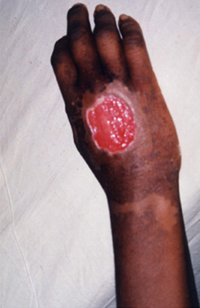Snake Bite


Snake Bite an emergency medical situation arrived at an accidental interaction between snake and human. A World Health Organisation-funded study estimated about 8,000 cases of snakebite with over 20% mortality in Bangladesh annually. Medically important land snakes in Bangladesh includes the krait, cobras, and vipers. Medically important snake species are the ones that fall into one of the three categories: bite usually causes death or disability; bite is not common, but may cause serious effects; commonly bites but seldom causes serious effects. Incidence of snakebite is usually recorded in young people engaged in active physical work in rural areas. Most bites in Bangladesh are recorded between May and October with highest number in June. Lower and upper limbs are most common sites of snakebite, but it may happen in other sites as well.
Non-poisonous bites out number the poisonous bites. Poisonous snakebite affects different systems depending upon the species of the snake. Considerable geographical variations in clinical presentations have been described following bite by same species of snakes in different geographical locations of their range. cobra and krait bites are associated with prominent neuromuscular paralysis (neurotoxicity). Necrosis of soft tissues has also been described from some countries including Bangladesh following cobra bite. Russell's viper bite is associated with blood coagulation abnormalities and kidney failure, with occasional reports of neurotoxicity, pituitary failure, and increased vascular permeability.
In order to prevent snake bite, the following may be avoided: handling piled up woods, rocks; putting hands in holes; careless fresh water fishing; walking through bushes and village foot walks at night without shoes and light, and sleeping in the floor of hut. Traditional snakebite doctor or 'ohza' treats most of the victims of snakebite in rural areas before hospitalization. Their methods of treatment include: incision by sharp instrument for blood letting, application of tourniquet, application of plant extract, stone, and seeds at the site of bite, and recitation of different verses including some from the Holy books. Some of these rituals are useless, some are potentially harmful and life threatening.
Snake venom 'A complex mixture produced in specialized glands located in the upper jaw of snakes, consists of proteins and polypeptides (enzymatic and non-enzymatic), and non-protein (organic and inorganic) constituents. Over 90% of the solid snake venom components are proteins or polypeptides. These compounds mostly cause the toxic or biological effects of the venom. [Md Abul Faiz]
